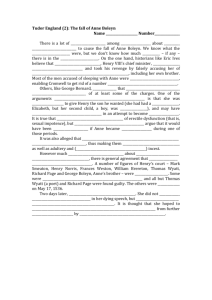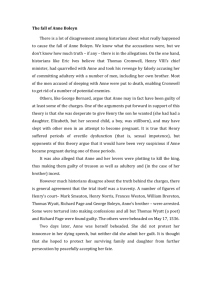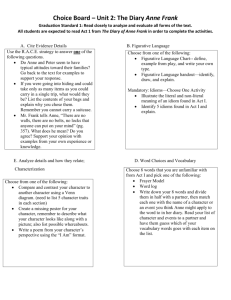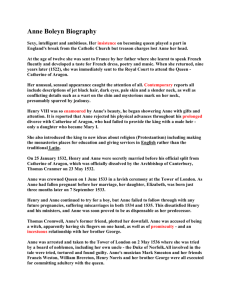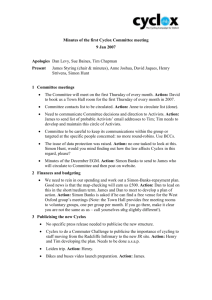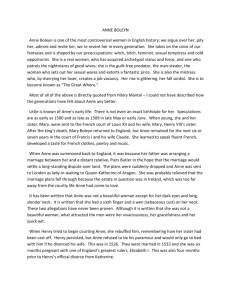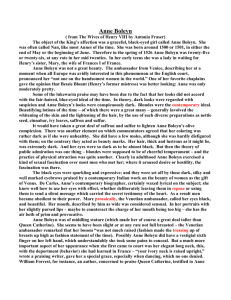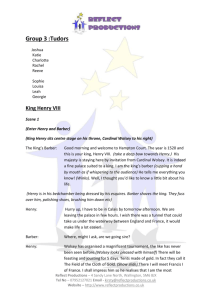Lesson 4 - Anne Boleyn - faith-lyon
advertisement
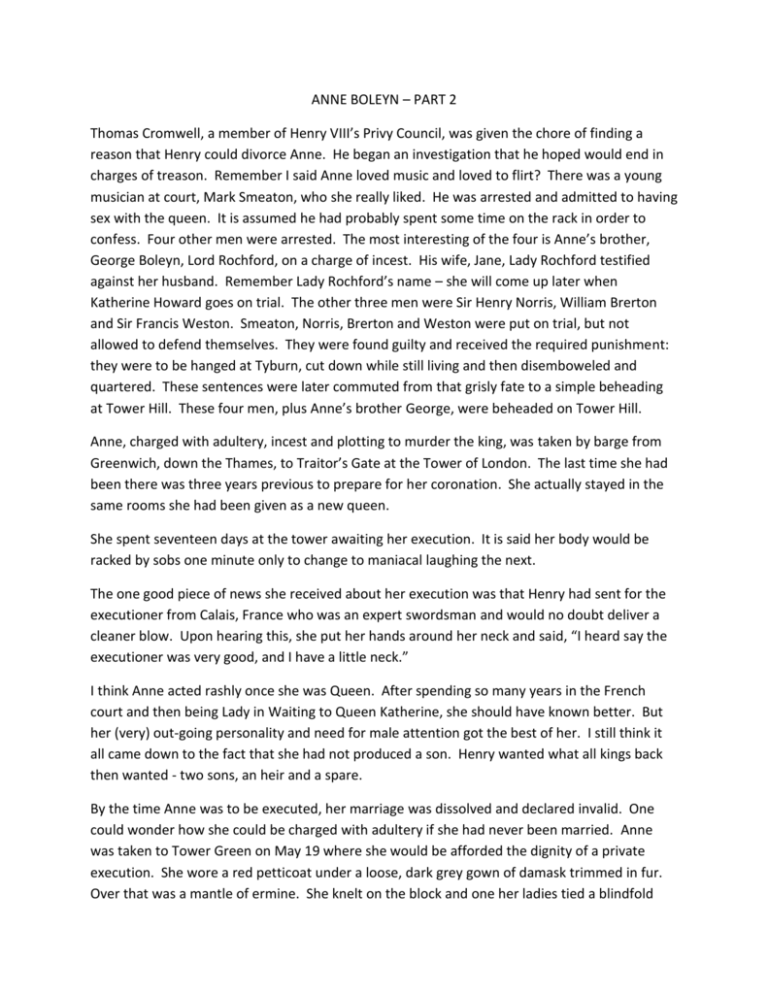
ANNE BOLEYN – PART 2 Thomas Cromwell, a member of Henry VIII’s Privy Council, was given the chore of finding a reason that Henry could divorce Anne. He began an investigation that he hoped would end in charges of treason. Remember I said Anne loved music and loved to flirt? There was a young musician at court, Mark Smeaton, who she really liked. He was arrested and admitted to having sex with the queen. It is assumed he had probably spent some time on the rack in order to confess. Four other men were arrested. The most interesting of the four is Anne’s brother, George Boleyn, Lord Rochford, on a charge of incest. His wife, Jane, Lady Rochford testified against her husband. Remember Lady Rochford’s name – she will come up later when Katherine Howard goes on trial. The other three men were Sir Henry Norris, William Brerton and Sir Francis Weston. Smeaton, Norris, Brerton and Weston were put on trial, but not allowed to defend themselves. They were found guilty and received the required punishment: they were to be hanged at Tyburn, cut down while still living and then disemboweled and quartered. These sentences were later commuted from that grisly fate to a simple beheading at Tower Hill. These four men, plus Anne’s brother George, were beheaded on Tower Hill. Anne, charged with adultery, incest and plotting to murder the king, was taken by barge from Greenwich, down the Thames, to Traitor’s Gate at the Tower of London. The last time she had been there was three years previous to prepare for her coronation. She actually stayed in the same rooms she had been given as a new queen. She spent seventeen days at the tower awaiting her execution. It is said her body would be racked by sobs one minute only to change to maniacal laughing the next. The one good piece of news she received about her execution was that Henry had sent for the executioner from Calais, France who was an expert swordsman and would no doubt deliver a cleaner blow. Upon hearing this, she put her hands around her neck and said, “I heard say the executioner was very good, and I have a little neck.” I think Anne acted rashly once she was Queen. After spending so many years in the French court and then being Lady in Waiting to Queen Katherine, she should have known better. But her (very) out-going personality and need for male attention got the best of her. I still think it all came down to the fact that she had not produced a son. Henry wanted what all kings back then wanted - two sons, an heir and a spare. By the time Anne was to be executed, her marriage was dissolved and declared invalid. One could wonder how she could be charged with adultery if she had never been married. Anne was taken to Tower Green on May 19 where she would be afforded the dignity of a private execution. She wore a red petticoat under a loose, dark grey gown of damask trimmed in fur. Over that was a mantle of ermine. She knelt on the block and one her ladies tied a blindfold over her eyes. The swordsman cut off her head with one swift stroke as she murmured over and over “To Jesus Christ, I commend my soul.” Her head and body were put into an arrow chest and buried in an unmarked grave in the Chapel of St. Peter ad Vincula, which adjoined the Tower Green. Her body was one that was identified in renovations of the chapel under the reign of Queen Victoria, so Anne’s body final resting place is now marked in the marble floor.
